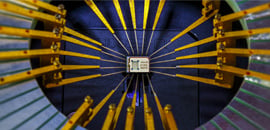Encoder Optics Cleaning, before you start:
Did you receive new product from MicroE with dirty optics?
You should receive MicroE product clean from the factory. We take great pride in our product and processes. If you are unsatisfied in any way with the product you received we want to know. Please contact Customer Service.
Did your optics get dirty during installation?
Our tape scale products come with a protective coating on them, and most of our encoders have recessed windows. This should help prevent the accidental fingerprint or scratch during installation. You should consider wearing powder free latex gloves or finger cots when installing either the encoder or the tape scales. You should always wear powder free latex gloves or finger cots when handling our glass scales.
Did either the encoder window or scale get dirty because of their location in the application?
It is in your best interest to consider cleanliness when choosing the location of the encoder or scale. Scales mounted flat on the base of a stage can collect debris much easier than one mounted perpendicular to the bottom surface. You should also consider protective covers in excessively dirty applications.
How dirty is “dirty” ?
Along with its industry leading large positional error tolerances we also can deal with an amount of contaminant on the scale or encoder window. If you do not see any detriment to performance you may want to keep your cleaning to a minimum.









